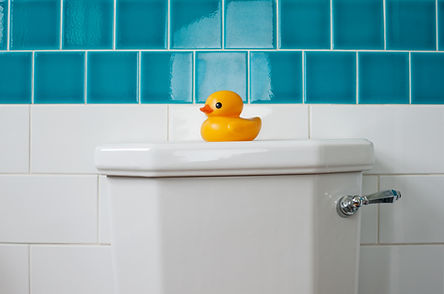
Save Water
How to save water in your home: easy changes you can make on a daily/regular basis to reduce water waste!

Water use - households in the U.S. in gallons per household per day and percent of indoor use (Source)
First, let's look at residential water use to understand where and how much water is generally used.
The most water is used in households from:
1. Toilets
2. Shower
3. Faucets
4. Washing clothes
This equals 80% of household water use.
Now, what can we do in each area to minimize water use?

#1: Toilet
Summary: fix leaks, consider a low-flow or dual-flush toilet, and adjust the water level in the tank
-
Regularly check for leaks: Leaky toilets can waste 215-400 liters of water daily.
-
Fix flapper and other components: Inspect and repair the flapper, float, and other parts in the tank to prevent leaks.
-
Use food coloring test: Place a few drops of food coloring in the tank and wait. If the bowl is colored, there's a leak
Consider upgrading your toilet:
-
Low-flow toilets: These use 6 liters per flush or less.
-
Dual-flush toilets ⭐: Offer both a full (6L) and a half flush (3L) option, allowing you to use less water for liquid waste.
-
Upgrade old toilets to a water-saving model: Replacing an old toilet with a newer, more efficient model can significantly reduce water usage
Adjust water level
-
Find the float: Most toilets have an adjustable float valve that controls the water level.
-
Lower the water level: By lowering the float, you reduce the amount of water stored in the tank, resulting in less water used per flush.
Only flush when necessary
#2: Shower
Summary: take shorter showers, take less frequent showers, use a low-flow showerhead, avoid baths, collect & reuse cool water (while waiting for it to turn warm)
Reduce length and frequency of showers
-
Shorter showers ⭐: Try to take shorter showers. According to Harvard Health, 3-4 minute showers with a focus on armpits & groin are good (Source).
-
Less frequent showers ⭐: Try not to shower every day. It's better for your skin health too (Source). Unless you are sweaty or grimy
-
Try to avoid baths as they often use more water.
Low-Flow Showerhead
-
Low-flow showerheads ⭐ can significantly reduce water usage while still providing a satisfying shower experience.
They often have built-in aerators that mix air with water, increasing the pressure while reducing flow

Be Mindful of Usage
-
Turn off the water when brushing your teeth or shaving
-
Use a water-filled sink for washing dishes
-
Soak pots & pans (if not washing immediately)
-
Get dual-flush toilets
Reuse clean water
-
Reuse water from cooking vegetables to water plants
-
Harvest rain water in barrels for watering your garden/lawn/plants

Collect & Reuse Water (while waiting for it to turn warm)
-
Collect cool water that runs while you're waiting for the shower to turn warm/hot. Use it for watering plants indoors or outdoors, cleaning or washing your pet.
#3: Faucets
Summary: install Low-Flow Faucet Aerators, fix leaks, be mindful of usage, consider water-efficient faucets, and reuse clean water
Install Low-Flow Faucet Aerators
-
These devices mix air with the water, reducing the amount of water used without affecting the water pressure. WaterSense-labeled aerators can save up to 30% on water usage ⭐.
Fix Leaks
-
A slow drip from a faucet can waste a significant amount of water. Repairing or replacing leaky faucets promptly is crucial.
Consider Water-Efficient Faucets
Replacing older faucets with new, water-efficient models can significantly reduce water usage
#4: Washing Machines
Summary: choose efficient machines, optimize load size, use cooler water, wash things less frequently (reuse/rewear) and use the quick wash cycle.
Choose Efficient Machines
-
Look for models with ENERGY STAR or WaterSense labels, as they are designed to use less water⭐
-
High-efficiency (HE) washers use significantly less water than older models
Optimize Load Size
-
Wash only full loads ⭐ to minimize water usage per wash.
-
If you must wash a smaller load, adjust the water level setting on your machine to correspond with the load size
Wash Less Frequently (Reuse/Rewear)
-
Rewear clothes as many times as possible. Try to leave washing for when they are stained or sweaty
-
Spot clean easy small stains (e.g. food) with soap & water to delay washing in the machine
-
Reuse towels/kitchen towels many times & don't wash bedding every 1-2 weeks (especially in winter months).
-
If it smells and looks clean (or good enough), rewear or use it again!
-
Saves water & energy ⭐

Use Cooler Water
-
Wash clothes in cold water whenever possible, as it saves energy and water.
Use Quick Wash/Express Wash Cycle
-
This cycle uses the least amount of water ⭐.
-
Designed for lightly soiled clothes, it uses a shorter wash time, less water, and lower water temperatures compared to regular wash cycles
-
Try to use this whenever your clothes/laundry load aren't too dirty!
Thanks for doing your part to help save water!
Thanks to Google AI summaries



